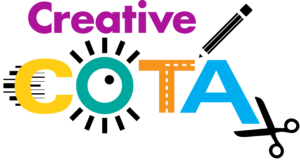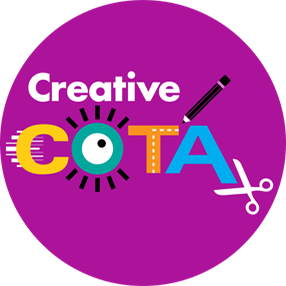
Crafts are not just fun activities; they serve as invaluable tools for fostering creativity, enhancing learning, and developing essential occupational therapy skills in the classroom. Incorporating crafts into lesson plans enriches educational experiences while promoting fine motor, visual perception, and executive function planning skills among students.
Why Crafts Matter in the Classroom:
Crafts Engage Multiple Senses: By involving hands-on manipulation of materials, crafts stimulate various senses, making learning more tangible and memorable. Students actively engage with concepts, fostering deeper understanding and retention.
Creativity Flourishes: Crafting encourages students to think outside the box, experiment with materials, and explore their imagination. It nurtures a creative mindset essential for problem-solving and innovation in academic and real-life scenarios.
Promoting Collaboration and Communication: Craft projects often entail teamwork, where students share ideas, delegate tasks, and work towards a common goal. Collaboration fosters communication skills, empathy, and respect for diverse perspectives.
Occupational Therapy Skills Development Through Crafts:
Fine Motor Skills Enhancement: Crafting involves intricate hand movements such as cutting, gluing, and coloring, which strengthen fine motor skills. These activities refine hand-eye coordination, finger dexterity, and grip strength, crucial for tasks like writing, typing, and self-care activities.
Visual Perception Improvement: Craft projects require students to interpret visual instructions, recognize patterns, and assemble components accurately. These activities sharpen visual perception skills, enabling students to identify shapes, colors, and spatial relationships more effectively.
Executive Function Planning Skills: Crafting involves planning, organization, and sequencing—key components of executive function skills. Students must follow step-by-step instructions, anticipate outcomes, and adapt strategies if needed. Through crafting, they learn to manage time, set goals, and prioritize tasks—a foundation for academic success and everyday life.
Implementing Crafts in the Classroom:
- Integrate Crafts into Curriculum: Align craft activities with lesson objectives to reinforce academic concepts. For instance, create dioramas to illustrate historical events or construct models to demonstrate scientific principles.
- Provide Varied Materials and Tools: Offer a diverse range of craft supplies—such as paper, clay, fabric, and recyclables—to cater to different interests and learning styles. Ensure access to appropriate tools like scissors, brushes, and markers.
- Encourage Self-Expression: Allow students the freedom to personalize their crafts, fostering autonomy and self-expression. Emphasize the process over the product, encouraging experimentation and celebrating individual creativity.
- Facilitate Reflection and Sharing: Encourage students to reflect on their craft experiences, discussing challenges, successes, and lessons learned. Provide opportunities for peer feedback and presentations, promoting confidence and communication skills.
Building an efficient craft closet is essential for any classroom, saving time and streamlining activities. Here are my top time-saving materials to include in your classroom craft closet:
- Pre-cut Shapes and Letters: Utilize pre-cut shapes and letters for easier craft preparation and enhance activities like collage-making, letter recognition, and spelling exercises.
- Self-Adhesive Foam Shapes: Self-adhesive foam shapes eliminate the need for glue, making them ideal for quick and mess-free crafting sessions. They’re perfect for creating patterns, decorating projects, and enhancing fine motor skills.
- Washable Markers and Crayons: Stock up on washable markers and crayons for easy cleanup and minimal mess. These versatile tools are essential for drawing, coloring, and illustrating various projects. My favorite are flip crayons from Handwriting without Tears. The unique design helps develop fine motor skills and the small size helps promote a more functional pencil grasp.
- Construction Paper Assortment: Keep a variety of colorful construction paper on hand for a multitude of craft projects. Construction paper is versatile and can be used for everything from greeting cards and collages to paper sculptures and origami.
- Paper Plates: Paper plates serve as a versatile base for a wide range of craft projects. They can be transformed into masks, hats, mobiles, and even 3D sculptures with minimal effort. Their sturdy construction makes them easy to handle and decorate, reducing the need for additional support materials. I love colored paper plates for a variety of craft activities when I need to skip the paint.
- Pipe Cleaners: Pipe cleaners are incredibly versatile and can be bent, twisted, and shaped into a wide array of creations. They’re perfect for enhancing fine motor skills and can be used to make animals, jewelry, and 3D sculptures.
- Googly Eyes: Googly eyes add personality and charm to any craft project. They’re quick and easy to attach, instantly transforming ordinary creations into lively characters. I love these Sticker Googly eyes!
- Glue Dots and Double-Sided Tape: Glue dots and double-sided tape runners are mess-free alternatives to liquid glue, perfect for adhering paper, fabric, and lightweight embellishments. They’re ideal for quick fixes and securing items without the wait time for drying.
- Elmer’s Glue: Elmer’s glue is a reliable adhesive for various craft projects, from paper collages to 3D constructions. These small easy-to-use bottles allow for controlled application, reducing mess and waste. Teach students to use just a drop as they are gluing down paper, not an elephant 🙂
- Stickers and Sticker Sheets: Stickers are a simple yet effective way to add flair to crafts and reward students for their efforts. Stock up on a variety of stickers and sticker sheets featuring letters, numbers, shapes, and motivational messages. I love getting seasonal stickers for a variety of activities.
- Washi Tape: Washi tape is decorative adhesive tape available in a wide range of colors and patterns. It’s perfect for adding borders, accents, and decorative elements to projects without the need for scissors or glue.
- Craft Scissors: Invest in a set of child-safe craft scissors with different blade designs such as scalloped, zigzag, and wavy edges. Craft scissors enable students to cut paper and other materials with precision, enhancing fine motor skills and creativity. Having multiple pairs available reduces wait times and promotes independent crafting.
- Watercolor Paints: Watercolor paints offer a versatile and mess-free option for adding vibrant colors to various art projects. They’re easy to set up and clean, making them ideal for quick painting sessions.
- Craft Kits and Assorted Embellishments: Invest in pre-packaged craft kits and assorted embellishments to save time on planning and preparation. These kits often contain everything needed for specific projects, including beads, buttons, sequins, and pom-poms.
Incorporating crafts into the classroom not only enhances academic learning but also cultivates crucial occupational therapy skills vital for students’ holistic development. By embracing creativity, collaboration, and hands-on exploration, educators empower students to become confident learners equipped with the tools for success in school and beyond.
About the Author
I am a Certified Occupational Therapy Assistant (COTA) and have been working in a public school system for more than 25 years. My resources can be found on TPT, BOOM Learning, Made by Teachers, Classful, and Your Therapy Source. I appreciate your interest wherever you wish to shop.
My mission is to help you find creative ideas to incorporate fine motor, visual perception, gross motor, and social-emotional learning into your lessons.
I hope you consider signing up for my Free Resource Library with your Email. I send out emails about once a week and share resources, tips, and planning ideas for your classroom or occupational therapy needs. Hopefully, these help your students work on building their skills in a fun and engaging way.





